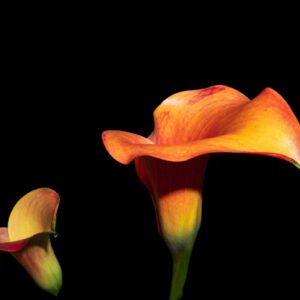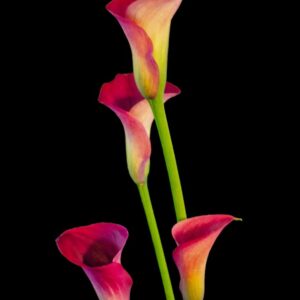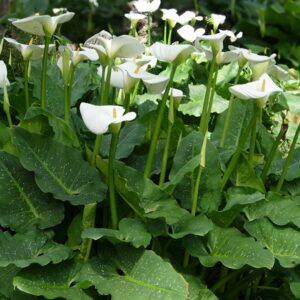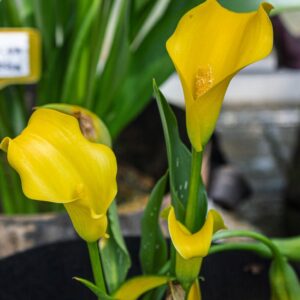Your cart is currently empty!
Unveiling the Enchanting World of Peace Lilies and Calla Lilies

Introduction:
With their elegant silhouettes and captivating bloom, peace lilies and calla lilies add an aura of tranquility and refinement to any space. These popular indoor plants share a common misconception, despite their distinct differences. This comprehensive guide delves into the captivating world of peace lilies and calla lilies, unraveling their diverse characteristics, providing cultivation tips, and exploring their symbolic meanings.
The Alluring Peace Lily
Characteristics:
- Botanical name: Spathiphyllum wallisii
- Origin: Tropical regions of Central and South America
- Appearance: Arched, glossy leaves with a deep green hue; large, showy spathes (modified leaves) that resemble white flags
- Flowering: Produces white or pale yellow spathes that last for several weeks
- Toxicity: Mildly toxic; ingestion can cause oral irritation or vomiting
Cultivation:
- Light: Prefers bright, indirect light, but can tolerate low light conditions
- Water: Keep the soil consistently moist, but avoid overwatering
- Temperature: Thrives in temperatures between 65-80°F (18-27°C)
- Humidity: Prefers high humidity; misting or placing the plant on a pebble tray can increase humidity levels
- Fertilization: Fertilize every 2-3 months with a balanced liquid fertilizer
Meaning and Symbolism:
Peace lilies exude an aura of serenity, symbolizing peace, harmony, and new beginnings. Their white spathes are often associated with purity, innocence, and hope.
The Dazzling Calla Lily
Characteristics:
- Botanical name: Zantedeschia spp.
- Origin: Southern Africa
- Appearance: Erect, sword-shaped leaves; distinctive trumpet-shaped flowers
- Flowering: Produces vibrant blooms in a range of colors, including white, yellow, orange, pink, and purple
- Toxicity: Highly toxic; all parts of the plant contain calcium oxalate crystals that can cause severe irritation if ingested
Cultivation:
- Light: Requires full sun to partial shade
- Water: Water regularly, especially during active growth and flowering
- Temperature: Tolerates a wide range of temperatures, but prefers warm conditions
- Hardiness: Most varieties are not cold-hardy and require protection from frost
- Fertilization: Fertilize monthly with a balanced liquid fertilizer
Meaning and Symbolism:
Calla lilies evoke elegance, purity, and beauty. White calla lilies are traditionally associated with weddings and new beginnings, symbolizing innocence and chastity. Yellow calla lilies represent joy and friendship, while purple calla lilies symbolize royalty and admiration.
Distinguishing Features:
| Feature | Peace Lily | Calla Lily |
|---|---|---|
| Botanical Name | Spathiphyllum wallisii | Zantedeschia spp. |
| Origin | Central and South America | Southern Africa |
| Flower Form | Spathe (modified leaf) | Trumpet-shaped |
| Flowers | White or pale yellow | Range of colors |
| Toxicity | Mildly toxic | Highly toxic |
| Hardiness | Not cold-hardy | Varies by variety |
| Symbolism | Peace, harmony, new beginnings | Purity, elegance, beauty |
Tips for Thriving Peace Lilies and Calla Lilies:
Conclusion:
Peace lilies and calla lilies, with their diverse characteristics and captivating blooms, bring a touch of elegance and serenity to any indoor or outdoor space. Proper care and attention will ensure these beautiful plants thrive, adding vibrant beauty and meaningful symbolism to their surroundings. Whether you seek the peace and tranquility of a peace lily or the vibrant allure of a calla lily, these plants offer a touch of nature’s enchantment that will elevate your home or garden.








Leave a Reply